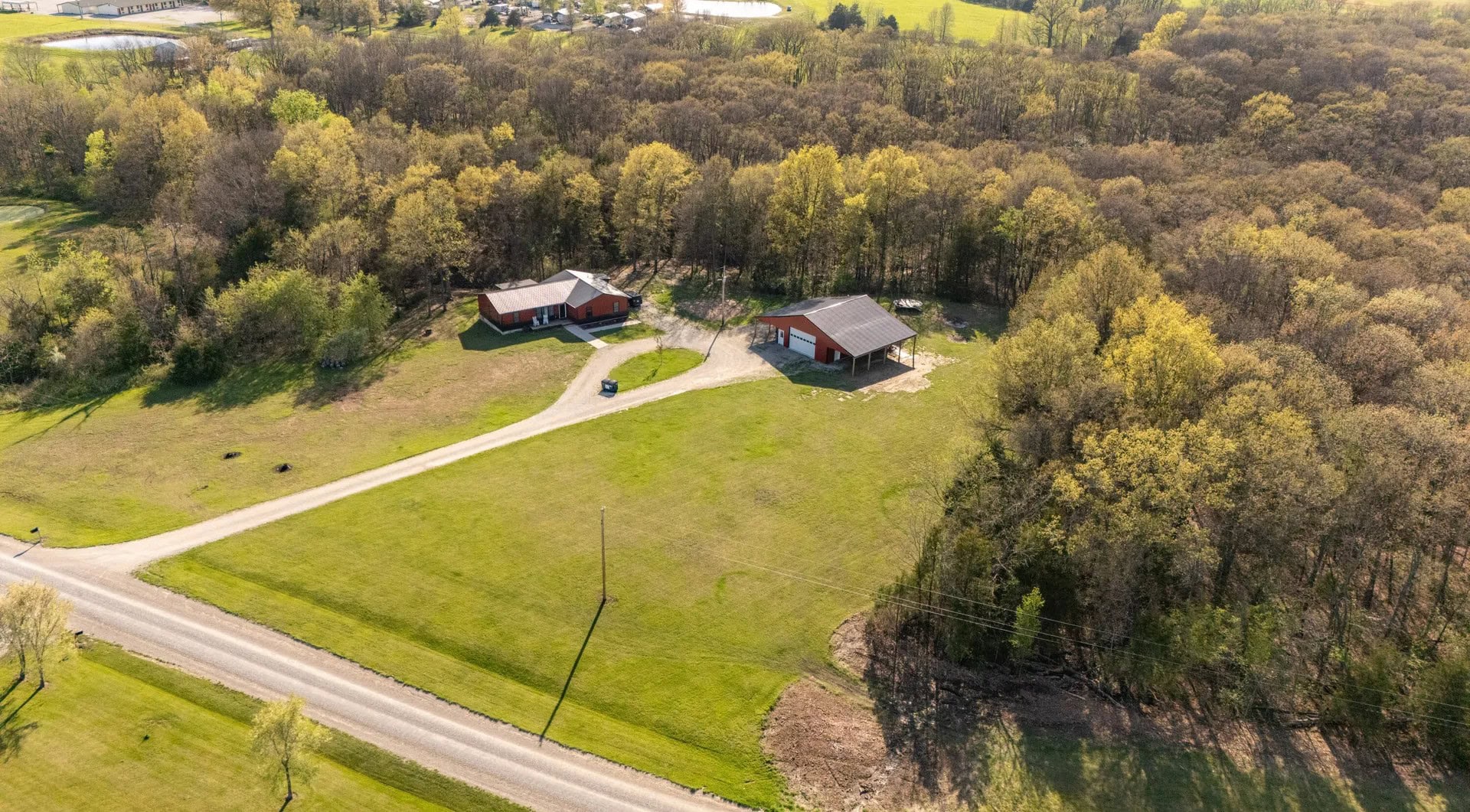Every acre of working land needs attention. The difference between ground that holds up through drought and ground that washes away comes down to how you manage it. Land management practices are the decisions and actions that protect soil, water, habitat, and long-term property value. Done right, these practices pay back year after year.
High Point Land Company works with landowners across Minnesota, Iowa, Missouri, and Wisconsin to put these practices in place. We help with working farms, pasture operations, timber tracts, and recreational properties. When you own land, you need more than theory. You need a plan that fits your soils, your lease situation, and your timeline. If you want to talk through what makes sense for your property, reach out to one of our managers.
Goals That Shape Your Management Plan
Strong land management starts with clear goals:
- Higher crop yield or better forage production so your land produces more per acre.
- Healthy soils that drain well, hold nutrients, and support strong root systems.
- Better water efficiency keeps moisture on your property instead of washing away.
- Improved wildlife habitat brings in game species and supports pollinators.
- Safe field access for equipment, emergency vehicles, and routine maintenance.
- Reduced erosion on slopes and near waterways protects your topsoil.
- Stronger resale value when you decide it’s time to sell.
Your goals depend on what your soils can do, what topography you have, and what leases are in place. The work gets scheduled across seasons so each practice happens when conditions are right.
Soil Conservation Practices
Soil health improves when you reduce erosion, build organic matter, and manage water infiltration. The ground under your crops does more than hold plants in place. It filters water, stores carbon, and feeds the biology that keeps nutrients cycling.
Field-tested soil conservation steps:
- Cover crops provide armor during fallow periods. They build organic matter when worked back into the soil, with studies showing increases of 7 to 74 percent in fields using this practice.
- Conservation tillage reduces erosion and fuel costs. This approach cuts the number of field passes by 40 percent or more compared to conventional plowing.
- Soil-test-based nutrient plans deliver the right fertilizer rate at the right time. You spend less on inputs and get better crop response.
- Grassed waterways and field shaping slow runoff where water concentrates. These structures keep topsoil in place during heavy rains.
- NRCS cost share programs help offset initial expenses for conservation structures and practice changes.
Water Management Strategies
Water moves through your land whether you plan for it or not. Smart water management keeps moisture where crops need it and moves excess water safely away from fields.
Actions that control water flow:
- Tile drainage systems need regular evaluation. Check outlets and maintain flow capacity to meet local regulations and prevent field flooding.
- Riparian buffers along streams filter runoff and stabilize banks. Research from the Chesapeake Bay shows these reduce nitrogen, phosphorus, and sediment in waterways.
- Stocked ponds and protected wetlands store water during wet periods and release it slowly. They also create wildlife habitat.
- Irrigation scheduling based on soil moisture means you water when plants actually need it. This saves pumping costs and prevents over-application.
- Local compliance requirements vary by county and watershed. Know what applies to your property before starting water management work.
Pasture and Grazing Management
Rotational grazing increases forage production by 30 to 70 percent compared to continuous grazing by giving plants time to recover between grazing periods. Moving livestock regularly also spreads manure more evenly and reduces bare spots.
Grazing practices that protect pasture:
- Rotational or adaptive multi-paddock systems let plants rest and build surface litter that protects soil. Move animals before they graze plants down to nothing.
- Match stocking rate to actual forage production. Base numbers on what your pasture produces, not what you hope it will grow.
- Strategic water and shade placement spreads animal impact across paddocks instead of concentrating damage in one spot.
- Overseeding with legumes adds nitrogen to soil naturally. It also boosts protein content in the forage your livestock eat.
- Fencing and cross-fencing layouts control where animals go and when. Good fencing reduces labor and improves grazing distribution.
Timber, Habitat, and Prescribed Fire
Forest and habitat management needs a lighter touch than row crops. The goal is to release good trees, control invasives, and open up space for wildlife without leaving the ground bare.
Timber and habitat work that pays off:
- Selective timber harvest removes low-quality trees and lets better ones grow. This improves stand structure and increases future timber value.
- Control invasive brush before and after cuts. Invasives take over fast after harvest if you don’t stay on top of them.
- Prescribed burning recycles nutrients and reduces wildfire risk. Recent research shows these burns cut wildfire severity by 16 percent and smoke pollution by 14 percent. Burns need permits, detailed plans, and the right weather window.
- Edge feathering and small forest openings create transition zones. Game species and pollinators use these areas heavily.
- Connect to regional wildlife programs when they match your property goals. State and federal habitat initiatives often provide technical help and cost sharing.
Invasive Species and Vegetation Control
Invasives spread fast once they get established. Early detection and quick action cost less than trying to reclaim a field after invasives have taken over.
Control steps that work:
- Detect and map invasives early before they spread across property lines. Document locations and species for your records.
- Mechanical removal works best on woody invasives. Cut and treat stumps on species that herbicides struggle to control.
- Time herbicide applications to plant growth stages. Targeting the right stage makes chemicals more effective and reduces the amount you need.
- Follow up with seeding after removal. Bare ground invites re-infestation from the seed bank or neighboring properties.
- Keep records for compliance purposes. Document what you sprayed, when, and where in case questions come up later.
Access, Roads, and Infrastructure
Good roads and maintained access points make every other land management practice easier. They also reduce liability and keep emergency vehicles from getting stuck.
Infrastructure that keeps land functional:
- Assess entrances, culverts, and internal roads annually. Catch drainage problems and soft spots before they turn into expensive repairs.
- Crown roads and maintain ditches so water sheds off the surface. Add rock or gravel where traffic creates ruts and mud holes.
- Maintain gates, signs, boundary markers, and corner posts. Clear property lines prevent disputes and reduce liability exposure.
- Keep field drives clean and stable. Equipment operators need safe access, and emergency responders need to reach all parts of your property.
Sustainable Practices That Support Both Ecology and Income
Sustainable land management practices can increase agricultural yields by 30 to 170 percent globally while preserving water and soil resources. These practices work because they treat land as a long-term asset, not just a place to extract value.
Proven sustainable approaches:
- Crop rotation breaks pest and disease cycles. Different crops manage soil nutrients differently and interrupt problems that build up in monoculture systems.
- Hedgerows and field margins increase biodiversity. These areas support beneficial insects that control crop pests naturally.
- Agroforestry windbreaks reduce wind erosion and catch snow that adds soil moisture in spring.
- Integrated pest management cuts chemical use while protecting yield. Scout fields regularly and treat only when pest pressure justifies the cost.
These methods cost less over time because they reduce purchased inputs and protect land from degradation.
Technology and Monitoring
You cannot manage what you do not measure. Technology helps track what changes over time and shows where different parts of your property need different treatment.
Tools that improve decisions:
- Soil sampling grids and zone sampling match fertility programs to actual field conditions. Different zones often need different rates.
- Aerial or satellite imagery spots stand vigor problems, drainage issues, and storm damage. You can see patterns that aren’t obvious from ground level.
- Drones provide quick post-weather checks without driving equipment across wet fields. They also help scout for pest problems and crop stress.
- GIS mapping organizes spatial data like lease boundaries, field histories, timber stands, and infrastructure locations. Everything stays in one system.
- Annual photo points document progress over multiple years. Take pictures from the same spots each season to track vegetation changes.
Recordkeeping, Compliance, and Risk
Good records protect you when questions come up about what happened on your land and when. They also help with tax planning and insurance claims.
Documentation that matters:
- Annual management plans list tasks, vendors, and completion dates. Track what got done and what carried over to next year.
- Lease files include insurance verification and proof that you delivered required notices to tenants on time.
- Cost tracking shows what practices pay back. Simple return calculations help you decide what to keep doing and what to change.
- Safety checklists cover structures, wells, fuel storage, and equipment areas. Regular inspections reduce liability and catch problems early.
- Program files for cost share and tax items keep everything organized. This includes documentation for conservation programs and 1031 exchanges.
High Point Works Across the Midwest With Landowners
High Point Land Company manages and advises on working farmland for sale in the Midwest across Minnesota, Iowa, Missouri, Wisconsin, and nearby states. We work with inherited land, estate situations, trust properties, and absentee ownership where the owner lives far from the property. Our team evaluates leases, helps time lease terminations before a sale, and connects owners with the right buyers when they decide to sell.
We also handle situations where families inherit land together and need help deciding whether to keep farming it, lease it out, or sell. These decisions get complicated fast when multiple people own shares and live in different places. High Point walks through the options and helps families make choices that work for everyone involved.

